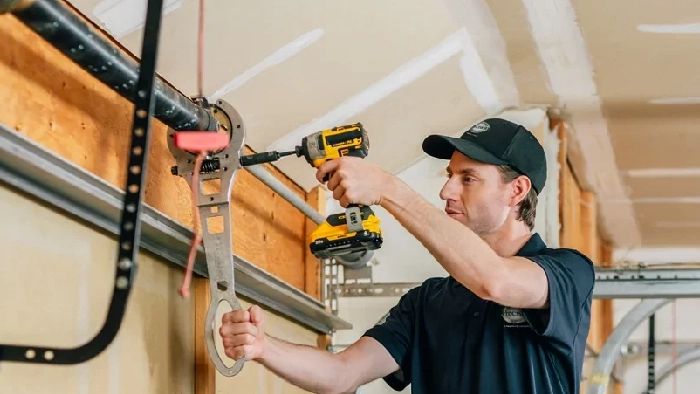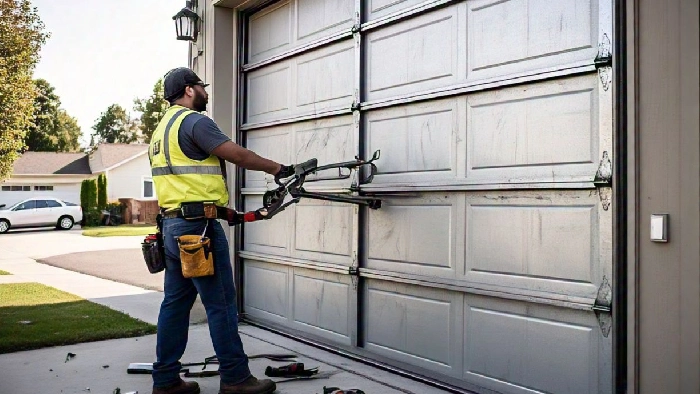DIY Guide: Fixing a Broken Garage Door Spring Safely
Introduction
Garage doors serve as the first line of defense between your home and the outside world. They provide security, convenience, and ease of access. However, one common issue that homeowners face is a broken garage door spring. A malfunctioning spring can lead to inconveniences, safety hazards, and costly repairs if not addressed promptly. In this comprehensive DIY Guide: Fixing a Broken Garage Door Spring Safely, we will walk you through the necessary steps to understand, assess, and fix a broken garage door spring while keeping safety at the forefront.
What Are Garage Door Springs?
Garage door springs are vital components that assist in lifting and lowering the heavy overhead doors. There are typically two types of springs used in garage doors: torsion springs and extension springs.

Torsion Springs
- Function: Torsion springs are mounted above the garage door opening and work by twisting.
- Advantages: They provide more lifting power and are generally considered safer than extension springs.
Extension Springs
- Function: These springs run along the sides of the garage door tracks.
- Advantages: They are easier to replace but can be more dangerous if not handled correctly.
Why Do Garage Door Springs Break?
Understanding why garage door springs break can help prevent future issues. Here are some common reasons:
Signs Your Garage Door Spring Is Broken
Recognizing the signs of a broken garage door spring early can save you time and money:
- The garage door won’t open or close properly.
- You hear loud noises when operating the door.
- One side of the door appears uneven or sagging.
If you notice any of these symptoms, it’s essential to take action quickly.
DIY Guide: Fixing a Broken Garage Door Spring Safely
Safety First!
Before diving into repairs, ensure you have all necessary safety equipment:
Step 1: Disconnect Your Garage Door Opener
For safety purposes, disconnecting your automatic opener is crucial:
Step 2: Release Tension on the Spring
This step is particularly important for torsion springs:
Step 3: Remove Old Springs
Once tension is released:
Step 4: Install New Spring
Now it's time for installation:
Step 5: Reapply Tension
Once your new spring is installed:
Step 6: Reconnect Your Garage Door Opener
After ensuring everything is securely in place:
Additional Tips for Ensuring Long-lasting Garage Door Springs
To prolong the life of your new springs, consider these maintenance tips:
- Perform regular inspections every few months for signs of wear or rust.
- Lubricate moving parts regularly with silicone-based lubricants for smoother operation.
- Adjust settings on electric openers as needed based on usage frequency.
When Should You Call Professional Services?
While DIY repairs can save money, certain situations require professional help:
- If you're uncomfortable working with high-tension components like springs,
- If you suspect additional issues beyond just a broken spring,
- Or if your attempts at repair have failed despite following this guide.
In such cases, searching for best garage door repair services near me or professional garage door services becomes essential.
The Cost of Repairing Garage Door Springs
Understanding cost implications helps prepare financially when hiring professionals for garage door repairs or garage door services Los Angeles CA.
| Service Type | Average Cost Range | |----------------------|---------------------------| | Torsion Spring Repair | $200 - $300 | | Extension Spring Repair | $150 - $250 | | Complete Replacement | $300 - $500+ |
FAQs About Garage Door Spring Repairs
1. How long do garage door springs last?
On average, they last about 10,000 cycles (open/close), which translates roughly into seven years depending on frequency of use.
2. Can I replace my own garage door spring?
Absolutely! With proper precautions and tools as outlined in our DIY guide above—safety first!
3. What happens if I don’t fix my broken garage door spring?
Ignoring it may lead to further damage resulting in higher repair bills later down the line.
4. Can I use WD40 on my garage door springs?
No! WD40 isn’t designed for lubrication; instead using a silicone-based lubricant is highly recommended here!
5. How much does professional service typically cost?
Professional rates vary but expect between $150-$500 depending on severity & type involved!


6.Is there an easy way to tell what type of spring I have?
Yes! A visual inspection should show either horizontal tracks (extension) or vertical ones above (torsion).
Conclusion
Fixing a broken garage door spring may seem daunting at first glance; however armed with knowledge from this comprehensive DIY Guide: Fixing a Broken Garage Door Spring Safely—you now possess all necessary tools needed for successful completion! Remember always prioritize safety alongside getting assistance where required—your home deserves secure functionality without compromising peace-of-mind!